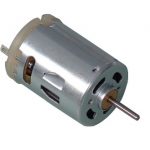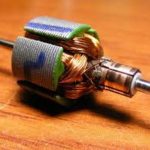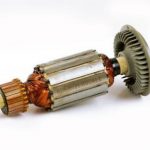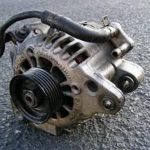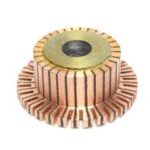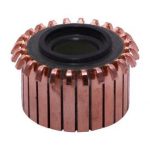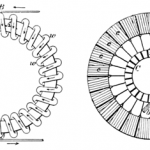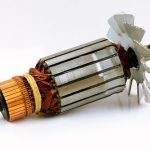The system of both the motoring and the generating is nearly alike. In DC, there is no constructional discrepancy among the generating and the utilizing machine. Likewise, in AC, both the utilizing and the generating devices have the identical constructional innovations. But, the construction of these two tools varies at a time I,e that is the acceptance of AC and DC. In this study, we shall consider the basics of what is utilizing and generating machine, … [Read more...]
Basics of Electricals
DC Machine : Construction, Working & Its Applications
The first commutator was invented by William sturgeon using the machine in the year 1837. After that, an American inventor namely "Thomas Davenport" was invented another commutator type DC machine and afterward, AC machines are invented. This machine is used to control the devices which operate using alternating current. A DC machine is used to operate the devices which use unidirectional current. When we evaluate with DC machines, Alternating Current … [Read more...]
What is AC Motor – Definition, Operation and Applications
A device that transforms the form of input electrical energy to an output mechanical energy. Basically, there are two types of electrical motors they are the DC and AC type. The DC type machines are normally used in small applications whereas the AC type has its importance in a wide range of applications. Because the AC machines have more advantages compared to that of DC machines. In this article, we shall discuss what is AC motor, construction, working … [Read more...]
DC Motor : Construction, Working & Its Applications
Modern machinery has an important role in the usage of an electric motor. Because every machine requires the operation of a motor. Most of the equipment in today's life has the usage of a motor. An Electric motor is a machine that converts electrical energy into mechanical energy. The electric motors are classified into two types like AC motor as well as the DC motor. It uses a battery to operate, it carries the unidirectional current from the battery and … [Read more...]
Dissimilarities Between Armature and Commutator
An armature is a combination of the winding, commutator, brushes, and ball bearings. It is a core on which all these elements hold to fulfill its own action. It is liable for the generation of flux when the current through the winding associates with the field flux. This association of flux creates a reaction that puts some influence on the flux caused. The obtained flux either gets distorted or decreased due to the armature reaction. But commutator role … [Read more...]
What is an Alternator – Construction, Working & Applications
An electrical generator is a machine that converts mechanical energy into electrical energy. Based on its operation, it is classified as AC and DC generator. An AC generator is more advantageous compared to a DC generator. Because in DC generator, the usage of commutator brush drop will be more and the operation will not be smoother. So, the AC generator is used for smoother operations. This AC generator itself is called an Alternator which finds its usage … [Read more...]
Commutation in DC Generator and Its Methods
An electrical generator is one kind of electrical machine, used to convert input mechanical form energy to electrical energy either AC (or) DC. Depending upon the output it is classified as an AC generator or a DC generator. The DC generator consists of a Yoke, armature core, pole core, bearings, brushes, and a commutator. Each component of the DC generator has its individual role to play in the operation. Among them, the working of a commutator is very … [Read more...]
Commutator : Working and Its Applications
An electrical generator is one kind of machine, used to alter energy from supplied mechanical form to electrical form. There are different kinds of generators available in the market and the classification of generators can be done depending on the output received. The output of any machine is AC or alternating current whether it is direct current (DC) or AC generator. Thus, in DC generator a device is necessary to change the current from alternating to … [Read more...]
Armature Winding – Definition, Classification & Uses
Truly, for the creation of a captivating field, a winding is required. This winding is associated with many titles based upon the point where it is provided. It is selected as a field winding if the winding is designed on the field poles. Likewise, it is defined as an armature winding if it is applied upon the focus. The winding is required for the creation of flux. This flux which in turn qualified for the creation of stability that allows needed twist … [Read more...]
Armature – Definition, Construction & Speed Control
The armature is a part of the motor that plays an important role in its operation. It is wound with a number of coils around it that forms a magnetic circuit. This circuit is responsible for the production of flux which in turn develops the required torque. This is the reason why it is considered as the heart of any rotating device because it is the source for the production of flux in any machine. So, let us discuss in detail about the importance of … [Read more...]

